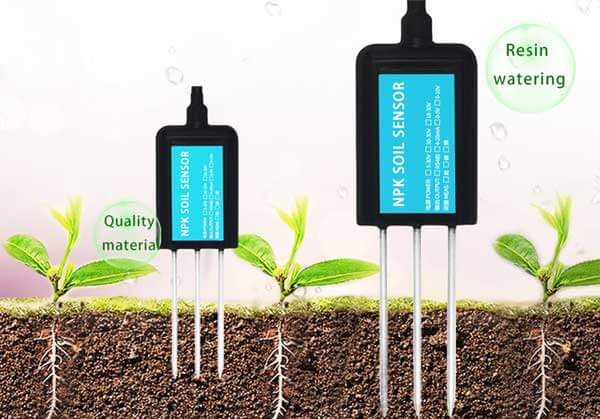Agriculture is the backbone of our society, providing food, fiber, and fuel for a growing population. The success of agricultural practices heavily relies on understanding the characteristics and condition of the soil. Traditional soil testing methods have limitations in terms of accuracy, time-consuming processes, and limited spatial coverage. However, with the advancement of soil sensor technology, farmers and researchers can now unveil the hidden secrets of agricultural land in a more efficient and precise manner. This article explores the applications, benefits, and future possibilities of soil sensor technology in agriculture.

What are Soil Sensors?
Soil sensors are devices that measure various parameters related to soil health and fertility. These sensors are designed to provide real-time data on soil moisture, temperature, pH level, electrical conductivity, and nutrient levels. By collecting and analyzing this data, farmers can make informed decisions regarding irrigation, fertilization, and crop management practices.
Soil Moisture Sensors:
Soil moisture is a crucial factor in plant growth and development. Soil moisture sensors measure the amount of water content in the soil. They can be placed at different depths to monitor water availability in the root zone. This information helps farmers optimize irrigation schedules, prevent overwatering or underwatering, and conserve water resources.
Soil Temperature Sensors:
Soil temperature affects seed germination, nutrient availability, and microbial activity. Soil temperature sensors provide accurate measurements of soil temperature at different depths. By monitoring soil temperature, farmers can determine the optimal time for seeding, apply appropriate crop protection measures, and manage nutrient release from fertilizers.
Soil pH Sensors:
Soil pH is a critical indicator of soil acidity or alkalinity. Different plants have specific pH requirements for optimal growth. Soil pH sensors measure the pH level of the soil, enabling farmers to assess soil conditions and adjust soil amendments accordingly. By maintaining the appropriate pH level, farmers can maximize nutrient availability and minimize nutrient deficiencies.
Electrical Conductivity Sensors:
Electrical conductivity (EC) is an indicator of soil salinity and nutrient content. EC sensors measure the ability of the soil to conduct electrical current. High EC levels may indicate excessive salts or high nutrient concentrations, which can impact plant health. By monitoring EC levels, farmers can manage irrigation practices, adjust fertilizer applications, and prevent yield loss caused by salinity stress.
Nutrient Sensors:
Soil nutrient sensors provide real-time measurements of essential nutrients such as nitrogen (N), phosphorus (P), and potassium (K) in the soil. These sensors eliminate the need for labor-intensive soil testing and allow farmers to optimize fertilizer application rates based on actual nutrient requirements. By using nutrient sensors, farmers can reduce nutrient leaching, minimize environmental impact, and enhance crop productivity.
Precision Agriculture and Variable Rate Technology:
Soil sensor technology plays a vital role in precision agriculture and variable rate technology (VRT). By collecting data from multiple sensors distributed across the field, farmers can create precise soil maps that identify spatial variability in soil properties. This information can be used to develop tailored management strategies, including variable rate fertilization, irrigation, and seed placement. VRT optimizes input utilization, reduces cost, and improves overall crop performance.

Benefits of Soil Sensor Technology:
Improved Decision-making: Real-time and accurate data provided by soil sensors enable farmers to make timely and informed decisions regarding irrigation, fertilization, and crop management practices.
Resource Efficiency: By optimizing water and fertilizer applications based on actual soil conditions, farmers can minimize resource wastage, reduce costs, and improve sustainability.
Crop Yield Optimization: Soil sensor technology helps farmers fine-tune their agronomic practices to maximize crop yield potential and quality.
Environmental Sustainability: By managing soil health and fertility more efficiently, soil sensor technology contributes to reducing nutrient runoff and minimizing the environmental impact of agriculture.
Integration with Farm Management Systems:
Soil sensor data can be seamlessly integrated with farm management systems and agricultural software platforms. These systems collect, analyze, and visualize sensor data, providing farmers with actionable insights and decision support tools. Integration allows for centralized monitoring, historical data analysis, and remote access to real-time soil information.
Future Possibilities and Research Direction:
Soil sensor technology is an evolving field with immense potential for future advancements. Ongoing research focuses o
